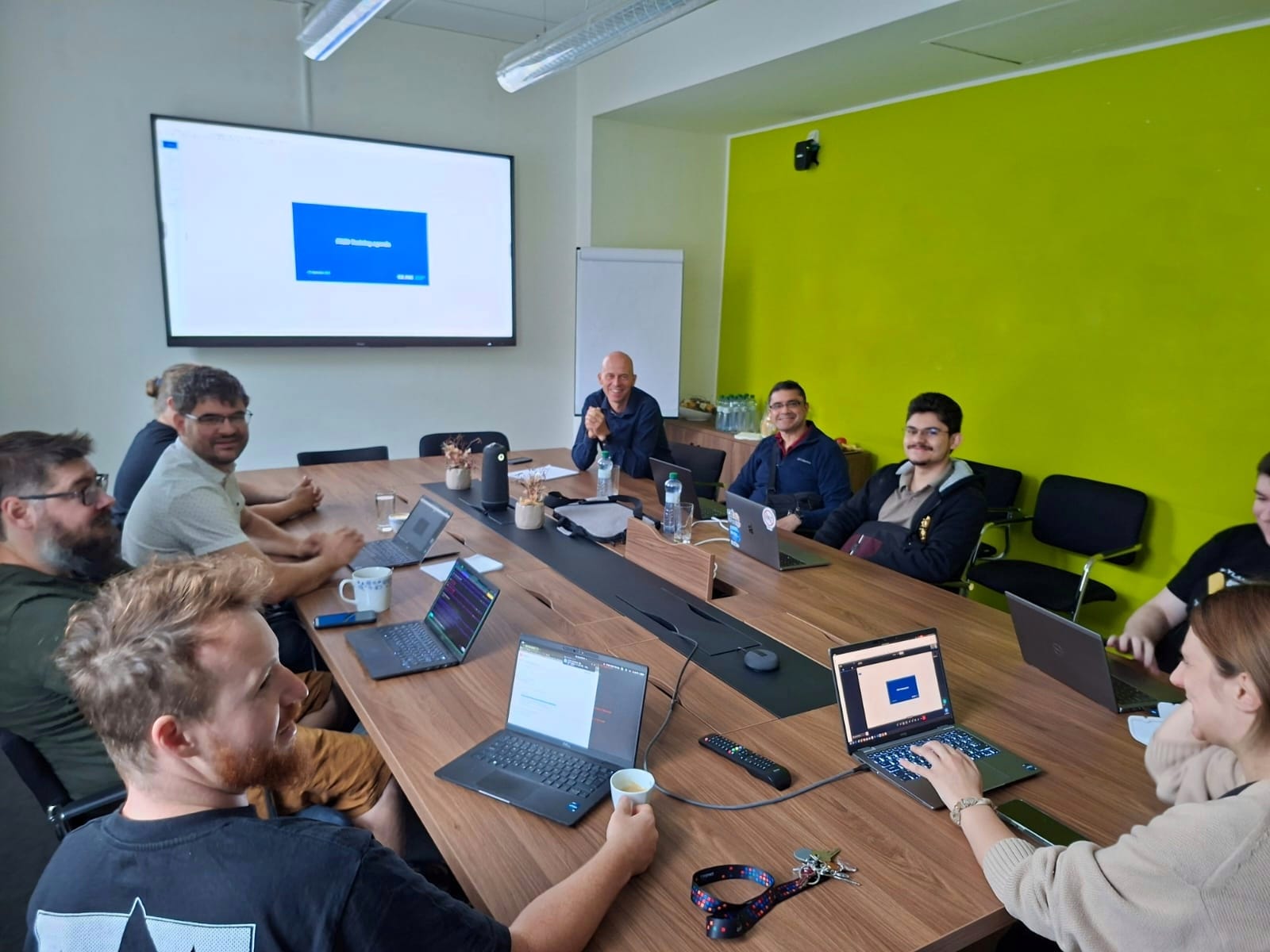At the end of September, we welcomed two representatives of the Costa Rican registry. Our colleagues from Costa Rica have been using our registry system FRED for several years to manage their domain space, but most of our communication has taken place in writing. The opportunity for another in-person meeting was therefore exciting for both sides.
EPPIC 3.1.0 is released
The CZ.NIC Association released a new version of EPPIC on July 2, 2025. Compared to the previous version, new commands have been added, the behavior of existing commands has been improved (in a backward-compatible way), and errors in texts have been fixed. Since EPPIC has only been briefly mentioned on this blog so far, let’s introduce it in more detail.
The year of domain auctions in the CZ registry
In mid-May, it has been one year since the launch of the CZ domain auctions run by our Association. This is certainly a good occasion to evaluate how this change in the domains’ life cycle is performing and how it has affected the operation of the domain registry in general. We surely have enough data to do so.
Authenticated DNSSEC Bootstrapping in Knot DNS
When a domain owner decides to have their zone secured with DNSSEC, adding validation keys and signatures to the zone are only half the story. To allow resolvers to start validating signatures, it is also necessary to link at least one of the domain’s validation keys (DNSKEY records) to the global DNSSEC chain of trust.
What has the new version of FRED brought and has yet to bring?
At the beginning of December 2023, we released a new version of FRED, the domain management system we developed for the operation of the Czech national domain, .CZ. and serving the same purpose in ten other countries. It is used to manage the domains of Argentina (.AR), Bosnia and Herzegovina (.BA), Costa Rica (.CR), Albania (.AL), North Macedonia (.MK), Tanzania (.TZ), Angola (.IT.AO and .CO.AO), Malawi (.MW), Lesotho (.LS) and Macau (.MO). The new version of FRED is pieced together from a multitude of incremental changes developed over the last 12+ months, which, with a few exceptions, we have continuously deployed into production in our country. A number of the modifications were interdependent in a significant way, so it was not possible to publish minor updates of the system because it would have been difficult for foreign registries to switch to them. FRED 2.48 is recommended as the version to upgrade to.
ID4me – single sign-on and domains the German way
On August 14, over 50 representatives of internet organizations met at the headquarters of DENIC, the German top-level domain registry, to attend the first ID4me summit. ID4me is the current name of the project, which was started last year under the name DomainID — I mentioned it briefly in my presentation at our last year’s conference IT 17.2. It was initiated by the .DE domain administrator, together with the major German registrar 1&1, and Open-Xchange, the operator of online collaboration tools. However, there are many other companies that are willing to support it, including the UK domain registry Nominet. The goals set by the project are quite familiar to us — reducing the number of passwords and registrations that people need while using the Internet. Like CZ.NIC with its mojeID project, the authors of ID4me have come to the conclusion that the domain world is just the place for an attempt to achieve these goals.
Together for better stability, speed and further extensibility of the DNS ecosystem
Over past years, various DNS software developers tried to solve the problems with the interoperability of the DNS protocol and especially its EDNS extension (RFC 6891 standard), by temporary workarounds, which aimed to lend their software an ability to temporarily accept various non-standard behaviors. Unfortunately, time has shown that this attitude of adding temporary workarounds is not a long-term solution, especially because the implementations not fully complying with standards were seemingly functional and there was no reason for a permanent fix. The result of these makeshift solutions is their accumulation in the DNS software, leading to a situation where there are so many of them that they themselves begin to cause problems. The most obvious problem is slower response to DNS queries and the impossibility to deploy new DNS protocol feature called DNS Cookies, which would help reduce DDoS attacks based on DNS protocol abuse.
Almost 4 million new gTLDs disappeared in 2017
Last year was not a good year for new generic domain names (new gTLDs). While a number of domain names became available for registration, the total number of new domain names decreased for the first time in its history. While there were 27,710,468 domain names registered at the beginning of the year 2018, only 23,823,948 saw the end of the year. Domain holders in the Czech Republic had a total of 23,245 new gTLDs registered, i.e. less than 0.1 %.
New Version of FRED, Testing Was Its Foundational
On the 15th of November, following the prior maintenance notification, our system administrators have successfully installed a new version of FRED, the system that is the basis of the .cz domain name registry (as well as national domain name registries in a dozen of other countries). What does that actually mean though?
Let’s make DNS great again!
I hope former US President Ronald Reagan would forgive me for borrowing and altering the slogan of his presidential campaign. After all, quite a few people seem to be doing it these days.
